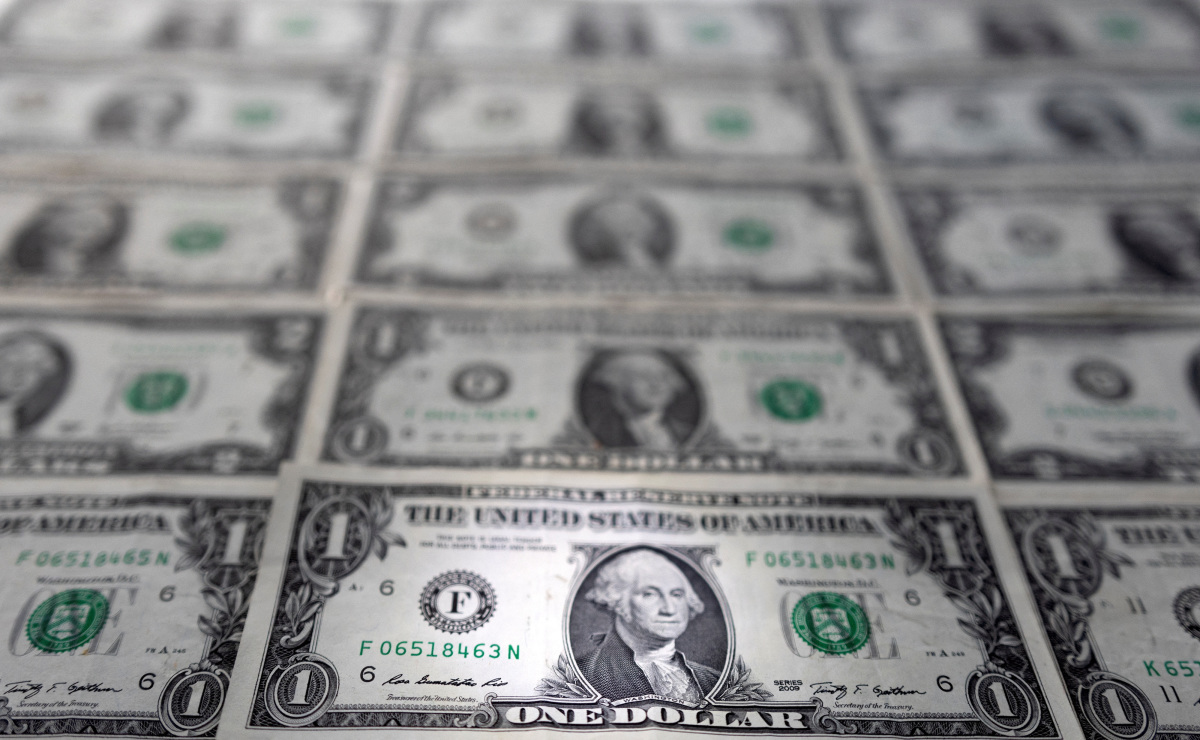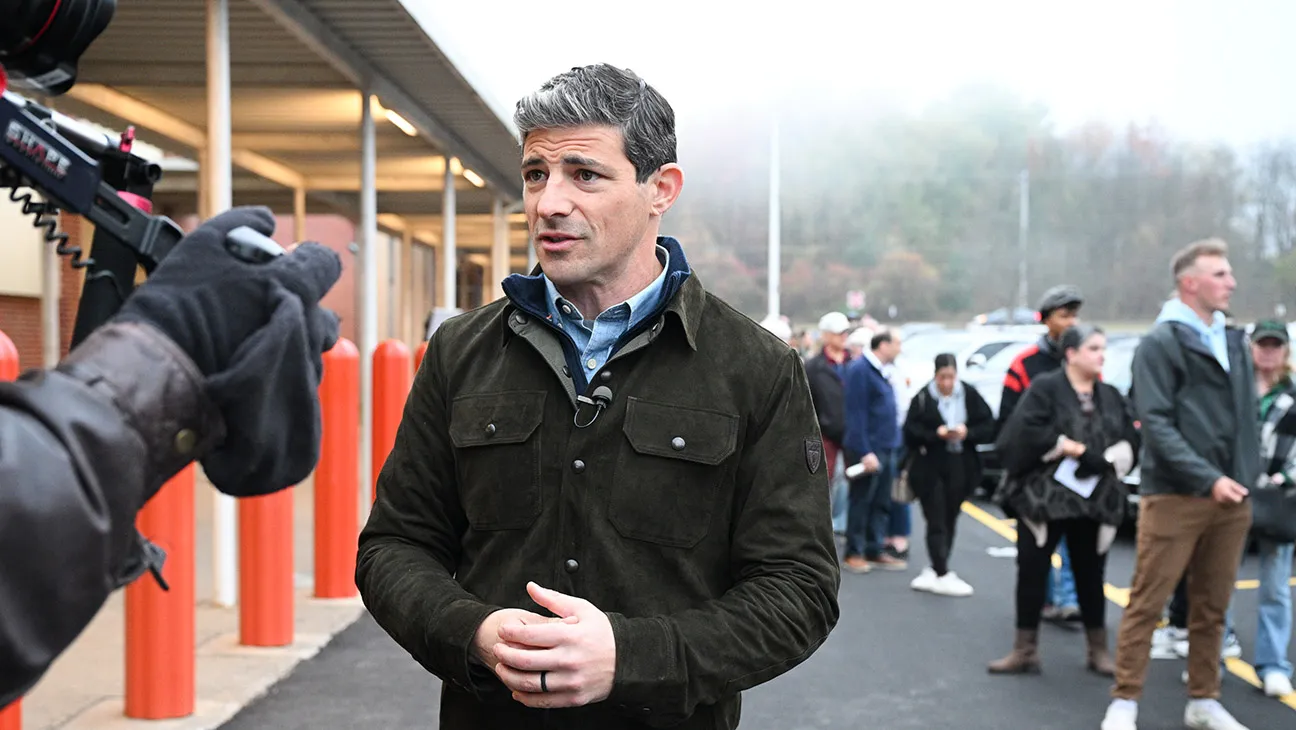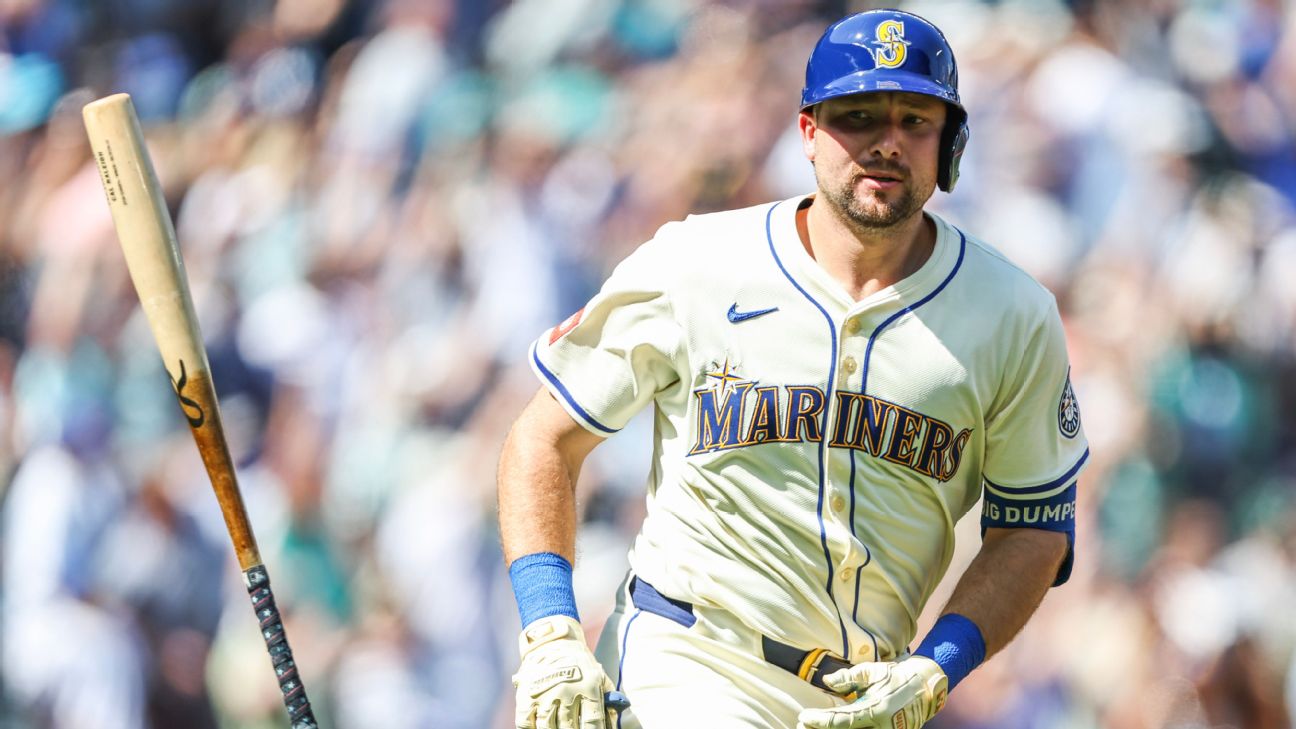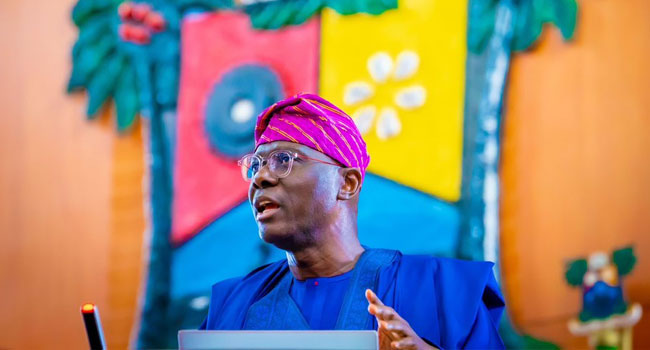Kumar Rocker, Dylan Crews and more MLB rookies not living up to the hype, plus how they can turn it around
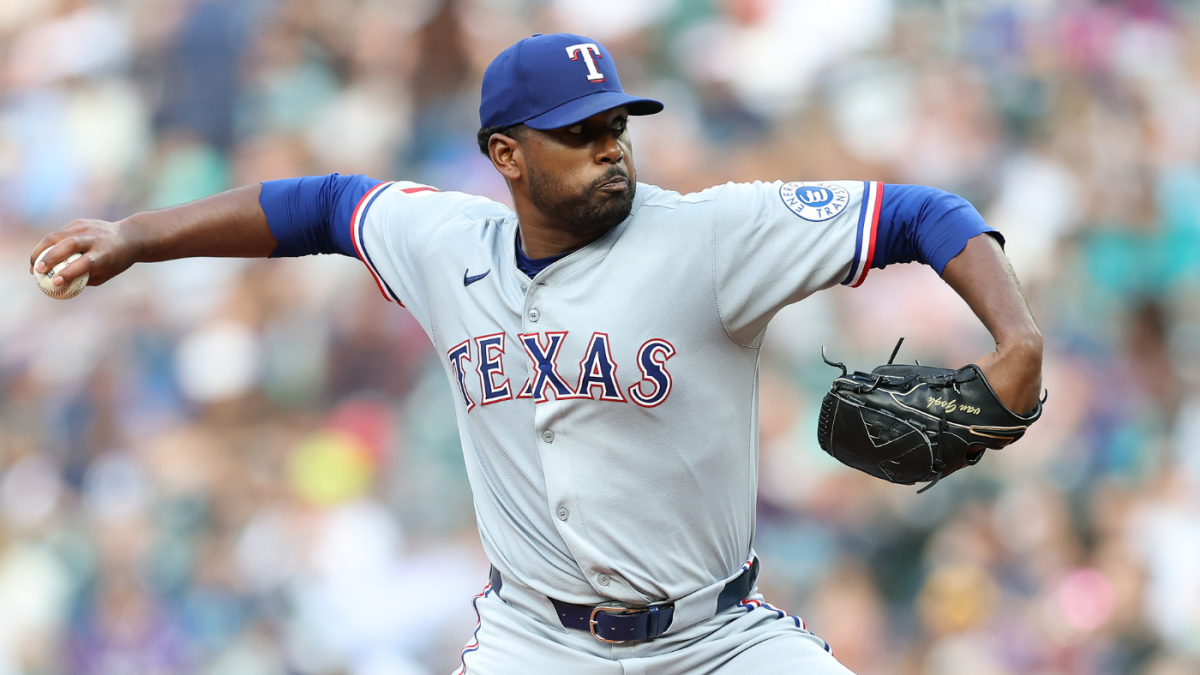
With Major League Baseball’s regular season winding down, this is an opportune time to check in some players who might have existed outside of the realm of CBS Sports’ general coverage. Because part of my duties here include covering prospects, from the draft on up to the majors, today I’m examining five big-name rookies who haven’t met expectations.
This group consists of five former first-round draft picks, each of whom I’ve written about since their amateur days. Four of the five were top 10 picks, meaning this group is supposed to be the best of the best. They haven’t demonstrated as much just yet, and so I’ve highlighted why those players have struggled this season, as well as what they need to work on over the winter to improve their games for 2026. Do note that the players are presented in no particular order.
Let’s get to it.
1. Jac Caglianone, OF, Kansas City Royals
Why you know his name: Caglianone had a prolific career as a two-way player at the University of Florida, shattering Matt LaPorta’s career program record for home runs by swatting 75 in 165 games. The Royals selected him sixth overall in the 2024 Draft based on his middle-of-the-order upside. (I’ve often compared his ceiling to a poor man’s Yordan Alvarez or a more famous Anthony Santander.) They’ve since had him ditch pitching in favor of playing the outfield.
How he’s performed to date: Caglianone debuted in early June as the Royals sought improvement over what they had received from their middling collection of right fielders. Unfortunately, he hasn’t cleared the bar. Through his first 53 games, he’s hit .152/.228/.277 with just six home runs and nearly three times as many strikeouts as walks. Caglianone’s 40 OPS+ falls between the figures posted by Hunter Renfroe (36) and Mark Canha (52). Renfroe and Canha, for those wondering, were two pieces of Kansas City’s aforementioned right-field situation pre-Caglianone. Both were released by the Royals because of their failures to perform at the plate.
What he can improve upon: I knew teams who had Caglianone ranked outside of the top 10 in his draft class, an assessment owed to his chase-happy approach. He remains a willing fisherman, but what’s more interesting to me is how poorly he’s fared when he’s connected. He’s one of seven hitters with at least 50 games played and a batting average on balls in play under .200 — and that’s despite an average exit velocity over 90 mph and launch angle around 5 degrees. Hitting the ball hard and low tends to result in a high average. Not here.
Part of the issue is Calgianone rarely launches the ball between 10 and 30 degrees (he ranks in the third percentile in that measure), meaning a lot of his balls in play are bunched at the extreme ends. Another piece of the puzzle is that many of his hard-hit outs have been directly at outfielders. Someone with as much strength as Caglianone doesn’t need to pull at all times to maximize his slugging output, but I wonder if he’d benefit from thinking right field more often.
Hitters opposing the Royals might think the same thought based on how Caglianone has looked in what serves as his first real exposure to the outfield. He has a massive arm, predictably, but at present he lacks both the range or the feel for the position to be an asset there.
2. Kumar Rocker, RHP, Texas Rangers
Why you know his name: Rocker authored one of the most storied collegiate careers in recent memory during his time at Vanderbilt. He was then drafted in the top 10 in consecutive summers: first by the New York Mets, who objected to something they saw in his physical. The Rangers took him third overall in 2022, and he’s yet to establish himself as a fixture on their big-league staff.
How he’s performed to date: Rocker has started 14 times at the big-league level this season, with those assignments scattered around a stint on the injured list and a pair of demotions to the minors. (He hasn’t pitched in the majors since July 31 and hasn’t pitched at all since Aug. 7 to attend to developmental purposes.) Rocker compiled a 5.74 ERA (64 ERA+) and a 2.43 strikeout-to-walk ratio in those games.
What he can improve upon: Longtime readers will recall that I was the low analyst on Rocker because of concerns about how his top-heavy arsenal would port and whether he could stay healthy with his delivery. To his credit, he’s since reworked both his repertoire and his delivery, adding more pitches and lowering his arm slot to create more deception. To his debt … well, his stockpile still grades as so-so, be it judged by results or pitch-quality models.
In particular, Rocker has struggled without the platoon advantage. Lefties have hit a combined .347 with a .547 slugging percentage when they swung at his sinker and four-seamer. He’s fared better with his cutter, though that’s a relative term, and neither of his breaking balls has generated even a 30% whiff rate against lefties. It’s clear he needs to find a better weapon, or at least a better approach, if he’s going to tame the sinister opposition.
I don’t think it’s alarmist to suggest next season is a make-or-break year for Rocker. He’ll enter his age-26 campaign with a longer injury history than a big-league track record. At some point, the Rangers are going to have to entertain moving him to the bullpen and seeing if he can fare better in short spurts with a streamlined approach.This is going to be an important winter, then, and here’s hoping for Rocker’s sake that he can find the remedy to what ails him.
3. Dylan Crews, OF, Washington Nationals
Why you know his name: Crews was a potential first-round pick coming out of high school, but withdrew from the class after the COVID-19 pandemic shut down the world. He spent most of the 2023 draft cycle viewed as the top available talent, only to go second behind LSU teammate Paul Skenes.
How he’s performed to date: Crews is up to 107 big-league games dating back to last year. He’s hit .212/.285/.354 (81 OPS+) with 12 home runs and 27 stolen bases overall — not quite living up to the expectations the Nationals likely had for him on draft night. To make matters worse, Crews missed nearly three months earlier this season after suffering a strained oblique.
What he can improve upon: Crews just needs to turn his loud physical tools into results. Easy enough, right?
Progress has seemed slow on that front, but there’s still reason for hope. Indeed, Crews has recorded a 95 mph or higher exit velocity on 40% of his career batted balls to date. That’s better than the league-average mark by a few percentage points. Crews also ranks in the 90th percentile in sprint speed, a measure that explains why he’s a plus corner defender.
The Nationals will install a new general manager and coaching staff this offseason, and it shouldn’t surprise anyone if a priority for that personnel is working with Crews on altering his swing and approach. He’s overly prone to chasing and whiffing and too often he sprays balls outside of the 10 to 30 degree window — the trajectory that tends to be the most fruitful.
Ultimately, Crews is going to require some work to get where the Nationals want him to be. Given that he’s appeared in fewer than 110 big-league games to date, it’s worth giving him some more time.
4. Chase Dollander, RHP, Colorado Rockies
Why you know his name: Dollander entered the 2023 Draft cycle ranked as the top arm in the class. He would be surpassed by Paul Skenes (you probably know his name, too) in due time, and his stock was further harmed by his own consistency woes. He still went ninth overall.
How he’s performed to date: Dollander, sidelined by a knee injury, debuted on April 6 and has since started 21 times. He’s amassed a 6.52 ERA (75 ERA+) and a 1.67 strikeout-to-walk ratio in 98 innings. Those overall numbers obscure his home-road splits: he has a 9.98 ERA in 11 starts at Coors Field, versus a 3.46 ERA in 10 starts on the road. Alas, his strikeout-to-walk ratio remained poor regardless of venue.
What he can improve upon: Shy of being traded to a more favorable pitching environment, Dollander is going to have to figure out how to pitch at home.
Dollander’s main offering, his upper-90s fastball, has been shellacked in his home appearances. Whereas batters hit .225 with a .405 slugging percentage against it on the road, those marks swell to .404 and .730, respectively, at Coors. Blame that discrepancy at least in part on the altitude.
Coors is known to mess with pitch shapes, and Dollander’s fastball loses more than two inches of rise and two inches of run compared to how it behaves on the road. It doesn’t help that his heater already has dead-zone properties to begin with — that is, it moves roughly as much horizontally as it does vertically, making it easier for batters to track.
Dollander did start to shy away from his four-seamer in a few starts in July and August, but on the year his fastball usage at home is only a few percentage points below his road rate. He’s going to have to get more comfortable with his sinker, and perhaps with leaning more on his two quality breaking balls, in order to avoid remaining a liability whenever he’s tasked with a home start.
5. Cole Young, 2B, Seattle Mariners
Why you know his name: Young was a late first-round pick in 2022, a prep middle infielder with surprising polish. He quickly made his way through the minors, debuting in May about two months before his 22nd birthday.
How he’s performed to date: Young punched his ticket to The Show by hitting .277/.392/.461 with 23 extra-base hits and more walks than strikeouts across 54 Triple-A games. He’s since scuffled to the tune of a .214/.305/.312 slash line in his first 74 big-league game. Perhaps more surprisingly, he’s been a terrible defensive presence, tallying minus-nine Outs Above Average.
What he can improve upon: Nowadays, with improved access to minor-league data and video, it’s easier than ever to get a feel for a player before they arrive in the majors. Sometimes, though, there are weird situations where a player shows up and doesn’t perform the same way they did in the minors. I’m not talking about results, either; I’m talking about the shape of their game.
Young is a shining example. He was supposed to be a contact-driven, all-fields hitter who was a skilled enough defender to be playable at short. That hasn’t been the case in the majors, not even close. He’s lifting and pulling the ball way more than he did in the minors, albeit without much success, and his second-base defense has seen him pile up a number of clank jobs and unimpressive throws.
I can’t speak to the intent behind those changes. I can speak to the effectiveness of them, however, and the new model of Young doesn’t seem preferable to the old one.
